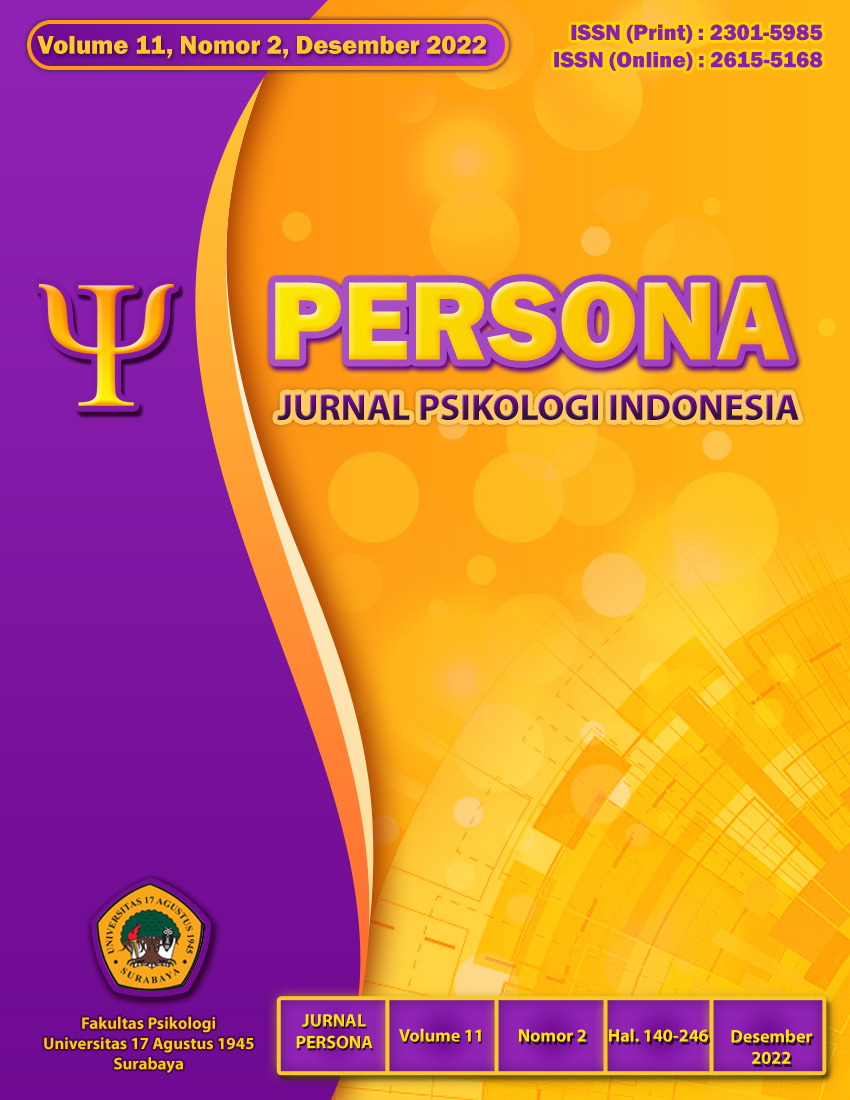Work-family culture dan organizational commitment karyawan wanita: Work-life balance sebagai mediator
Work-family culture and organizational commitment of female employees: Work-life balance as a mediator
DOI:
https://doi.org/10.30996/persona.v11i2.7759Keywords:
Organizational commitment, tenaga kerja wanita, work-family culture, work-life balanceAbstract
Abstract
The economy and education levels in Indonesia which continue to grow are not directly proportional to the increase in women employees. One of the factors that make Indonesian women underrepresented in the workforce is the family factor, women decided to leave work when they are married. This study aims to examine the effect of work-life balance in mediating the relationship between work-family culture and organizational commitment of women employees in the hope women employees are more committed to the organization because of the availability of supportive organizational culture. The instruments used are the work-family culture scale (∝ = 0.84), work-life balance (∝ = 0.88), and organizational commitment (∝ = 0.72). The sampling technique used was purposive sampling and the participants are 120 women employees in the banking industry. Data analysis used PROCESS Hayes model 4 (simple mediation). The results showed that work-life balance fully mediates the relationship between work-family culture and organizational commitment. This study provides an understanding of the importance of implementing a work-family culture to balance work and life demand in order to make employees more committed to the organization.
Keywords: Female employees; organizational commitment; Work-family culture; Work-life balance
Abstrak
Tingkat ekonomi dan pendidikan di Indonesia yang terus tumbuh ternyata tidak berbanding lurus dengan bertambahnya tenaga kerja perempuan. Salah satu faktor kurangnya partisipasi pekerja perempuan di Indonesia adalah faktor keluarga yaitu perempuan memutuskan untuk keluar dari pekerjaan karena sudah berkeluarga. Penelitian ini bertujuan untuk mengetahui pengaruh work-life balance dalam memediasi hubungan work-family culture dan organizational commitment karyawan wanita sehingga diharapkan karyawan wanita lebih berkomitmen terhadap organisasi karena budaya organisasi yang mendukung. Instrumen yang digunakan adalah skala work family culture (∝= 0.84), work-life balance (∝ = 0.88), dan organizational commitment (∝= 0.72).Teknik sampling yang digunakan adalah purposive sampling dengan kriteria karyawan wanita di industri perbankan dan didapatkan 120 responden. Teknik analisis data menggunakan PROCESS Hayes model 4 (mediasi sederhana). Hasil penelitian menunjukkan bahwa work-life balance memediasi secara sempurna hubungan antara work-family culture dan organizational commitment. Studi ini memberikan pemahaman akan pentingnya menerapkan work-family culture untuk menyeimbangkan tuntutan kehidupan pekerjaan dan pribadi sehingga membuat karyawan lebih berkomitmen pada organisasi.
Kata kunci: keseimbangan kehidupan kerja dan pribadi; komitmen organisasi; kultur organisasi ramah keluarga; tenaga kerja wanita
Downloads
Downloads
Published
Issue
Section
License
The author who will publish the manuscript at Persona: Jurnal Psikologi Indonesia, agree to the following terms:
1. Authors retain copyright and grant the journal right of first publication with the work simultaneously licensed under a Creative Commons Attribution ShareAlike License that allows others to share the work with an acknowledgment of the work's authorship and initial publication in this journal.
2. Authors are able to enter into separate, additional contractual arrangements for the non-exclusive distribution of the journal's published version of the work (e.g., post it to an institutional repository or publish it in a book), with an acknowledgment of its initial publication in this journal.
3. Authors are permitted and encouraged to post their work online (e.g., in institutional repositories, pre-prints sites or on their website) prior to and during the submission process, as it can lead to productive exchanges, as well as earlier and greater dissemination of published work






